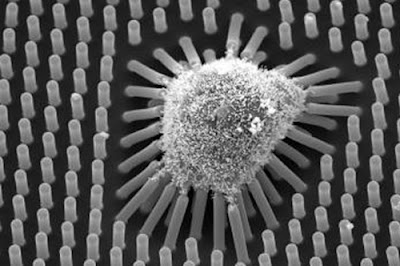A long-time leader in the study of adult stem cells, U-M has bolstered its human embryonic stem cell program, and added a complementary iPS cell research effort, since the passage of Proposal 2 in November 2008. The state constitutional amendment eased onerous restrictions on the types of embryonic stem cell research allowed in Michigan.
Recent milestones include:
- The launch, in March 2009, of a U-M-led consortium to create new
human embryonic stem cell lines to aid the search for disease treatments
and cures. The A. Alfred Taubman Medical Research Institute’s
Consortium for Stem Cell Therapies (CSCT) is based at the Medical
School, and researchers from across campus—including scientists at the
Life Sciences Institute, the College of Engineering, the Comprehensive
Cancer Center and the Department of Cell and Developmental
Biology—participate.
In addition, collaborations are underway between CSCT and U-M’s University Research Corridor partners—Michigan State University and Wayne State University–as well and other institutions. - CSCT’s development of the state’s first human embryonic stem cell line in October 2010. The first Michigan line, known as UM4-6, is the product of years of planning and preparation at U-M; the work was made possible by the state constitutional amendment allowing Michigan researchers to derive embryonic stem cell lines using surplus embryos from fertility clinics.
- CSCT’s development, in April 2011, of Michigan’s first human embryonic stem cell lines carrying the genes responsible for inherited diseases. With this accomplishment, U-M joined a small handful of U.S. universities that are producing disease-specific human embryonic stem cell lines. The work will enable scientists here and around the world to study the onset and progression of genetic disorders and to search for new treatments.
- The reprogramming, by CSCT scientists in July 2011, of adult skin cells so they behave like embryonic stem cells. The reprogrammed cells are called induced pluripotent stem cells, or iPS cells. They display many of the most scientifically valuable properties of embryonic stem cells while enabling researchers to bypass embryos altogether.
- The announcement on Feb. 14, 2012, that the U-M’s first human embryonic stem cell line, UM4-6, will be added to the National Institutes of Health’s national registry, joining 146 other cell lines. Inclusion on the national registry makes the U-M-derived cell line available to the scientific community for federally funded embryonic stem cell research projects. Registry listing was a prime CSCT goal since its inception.
- In January of 2013 the Consortium for Stem Cell Therapies reorganized with an enhanced focus on disease-specific stem cells and was re-named MStem Cell Laboratories. MStem Cell Laboratories have obtained generous funding from the University of Michigan President’s Office, Medical School Dean’s Office, A. Alfred Taubman Medical Research Institute, and Department of Obstetrics and Gynecology.
The Center for Stem Cell Biology was established in 2005 with $10.5 million provided by the U-M Medical School, the Life Sciences Institute, and the Molecular and Behavioral Neurosciences Institute.
The center’s main goal is to determine the fundamental mechanisms that regulate stem cell function. That knowledge, in turn, provides new insights into the origins of disease and suggests new approaches to disease treatment. Most of the work involves adult stem cells — including blood-forming and nervous system stem cells — but human embryonic stem cells also are studied.
http://www.stemcellresearch.umich.edu/

No comments:
Post a Comment